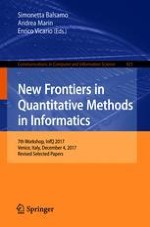2018 | Buch
New Frontiers in Quantitative Methods in Informatics
7th Workshop, InfQ 2017, Venice, Italy, December 4, 2017, Revised Selected Papers
herausgegeben von: Prof. Simonetta Balsamo, Andrea Marin, Enrico Vicario
Verlag: Springer International Publishing
Buchreihe : Communications in Computer and Information Science
